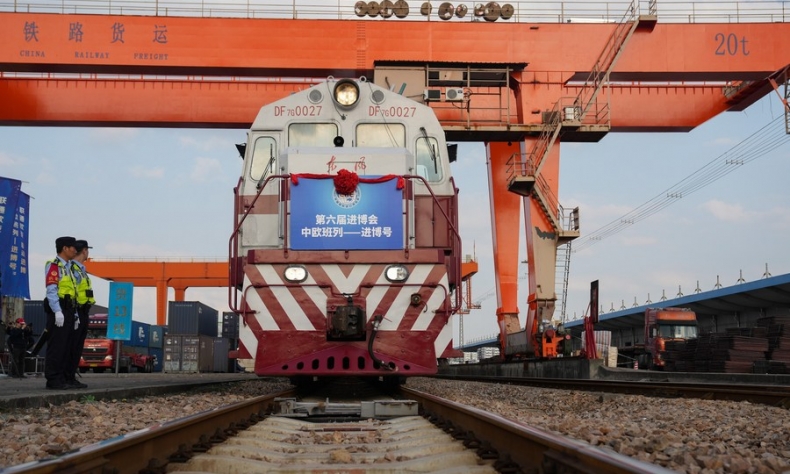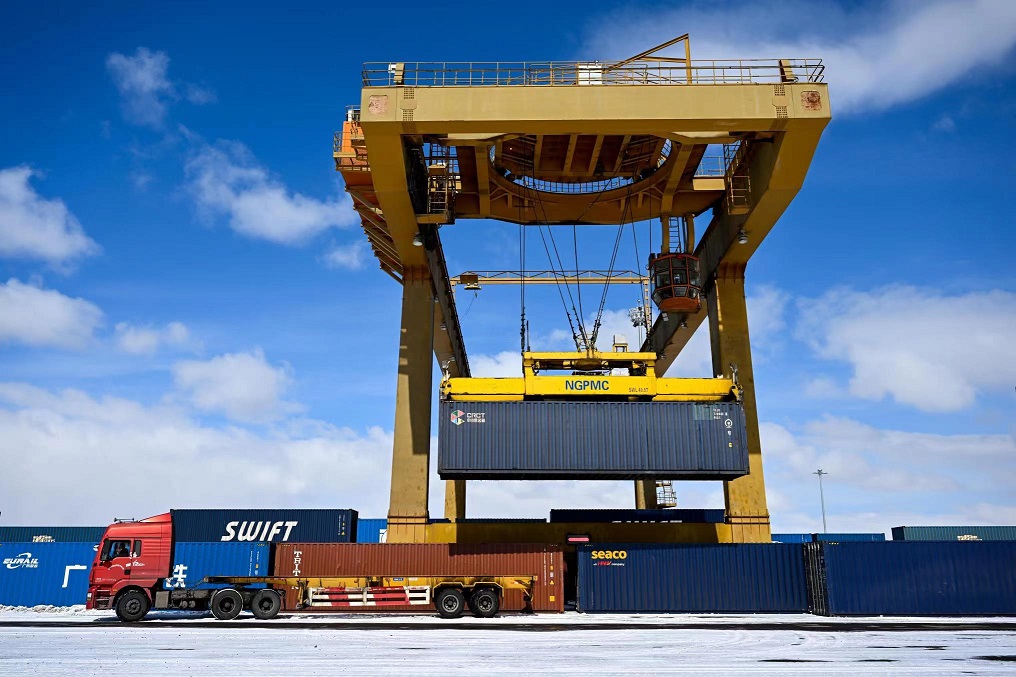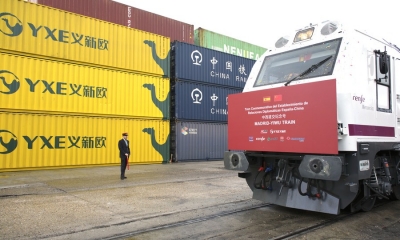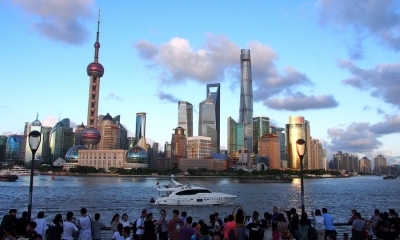China-Europe Freight Train Guarantor of Global Supply Chain Stability

As some countries attempt to politicize the subject of supply chains for geopolitical and strategic gains, the China-Europe railway stands as an example of what can be achieved when two regions are integrated through infrastructure.
“The Alataw Pass and the Horgos Port, two major railway ports in northwest China’s Xinjiang Uygur Autonomous Region, have handled more than 70,000 China-Europe freight trains since the start of their operations,” according to a recent report by Xinhua. The region, which is a gateway to Central and Western Asia, has become a vital transit hub for outbound goods exports to Europe as well as a through-route for the China-Europe railway, which has been in operation since 2011. Steadily growing in terms of scope and the number of participating cities, the railway has handled over 36,000 trains in the space of a decade.
The China-Europe railway makes it possible to ship goods overland from as east as Shanghai to as west as Lisbon, and is therefore a primary guarantor of goods supply and supply-chain resilience for the landmass of Eurasia. In turn, this makes it an enabler of economic integration, inflation reduction, and convenience for all participating parties. To this end, the railways have been instrumental in supplying Europe and other countries during times and scenarios when standard shipping routes have been unavailable or interrupted.
For supply chains to work effectively, they must be interconnected via strong logistical networks, which enable goods to be shipped quickly, safely, and cost-effectively. This requires a triangulation of shipping, railway, and road infrastructures, which allows large cargo to smoothly navigate geographical obstacles.
Railway is faster, safer, and more cost-effective than shipping, and the China-Europe railway connects two continents and bypasses the lengthy and potentially hazardous need for shipping. While a container ship may take a month to reach a European port, such as going from Shanghai to Piraeus in Greece, the China-Europe railway can ship goods westbound in just under a week. This gives suppliers a competitive edge in meeting demand by shipping goods at four times the speed.

When the COVID-19 pandemic snarled port operations globally which caused massive shipping delays and sent sea freight costs soaring, the China-Europe railway played a very important role in ensuring European countries could meet their surging demands for medical equipment and supplies. Given the disruption of global supply chains, the China-Europe railway acted as a failsafe option and provided a cheaper alternative to air or sea freight, allowing supplies to be moved to European countries very quickly, meeting the demand for masks, personal protective equipment (PPE), and necessary goods accordingly.
In 2021, a record 15,183 train trips were made along the Eurasia route, transporting 1.46 million 20-foot equivalent unit (TEU) containers, according to China’s state railway operator. As of January 2022, more than 50,000 train trips had brought 4.55 million TEU of cargo worth $240 billion to 180 cities in 23 countries in Europe, figures from the China State Railway Group Company showed.
In this case, as some countries attempt to politicize the subject of supply chains for geopolitical and strategic gains, the China-Europe railway stands as an example of what can be achieved when two regions are integrated through infrastructure. Even beyond the question of Europe, there are many landlocked countries on the route that do not have the chance to procure goods through maritime shipping, hindering their ability to become key exporters. However, the railway has provided them with opportunities to boost their own exports both east and west.
The China-Europe railway has been a net benefactor in the promotion of supply chains, stability, and security across the enormous Eurasia region, providing an alternative to shipping while also enhancing and accelerating the pace of economic development across the routes it runs through, unleashing new economic opportunities and bringing countries together.
 Facebook
Facebook
 Twitter
Twitter
 Linkedin
Linkedin
 Google +
Google +







